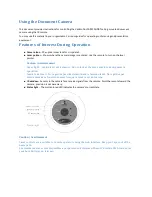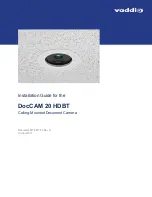
4. Test a complete range of good and bad samples to make sure that the sensor accepts good parts and rejects bad parts.
Figure 67. Average Gray—Pass
Figure 68. Average Gray—Fail
8.2
Bead Tool
Use the Bead tool to inspect parts for uniformity of adhesive or sealant material, or for uniformity of a gap. In an industrial
setting,
this
"bead" of material is commonly applied in a strip along a known path. The Bead tool looks at this
pre-defined
path and
verifies
whether
the adhesive or sealant has been correctly applied.
For the purposes of this tool, a bead is any long, narrow strip of approximately consistent width and approximately consistent color. The
bead must have
sufficient
contrast with the background so that a simple grayscale threshold scheme can separate the two. Background
clutter
and
optical
noise, such as shiny spots or holes in the bead, are
permitted,
but their presence may degrade the robustness of a
bead
inspection.
The Bead tool assumes that the bead material has been applied by a mechanized system and is consistent in
location
and
direction.
The
tool does not
attempt
to detect, follow, or account for
variations
in bead
location.
Example
applications:
• Detect uniformity of a bead of adhesive
• Detect uniformity of a gap between two adjacent materials
8.2.1 Bead Tool: Input Parameters
Use the Input parameters to
configure
how the tool analyzes an image.
Figure 69. Bead Tool—Input Parameters
VE Series Smart Camera
www.bannerengineering.com - Tel: 763.544.3164
55
















































